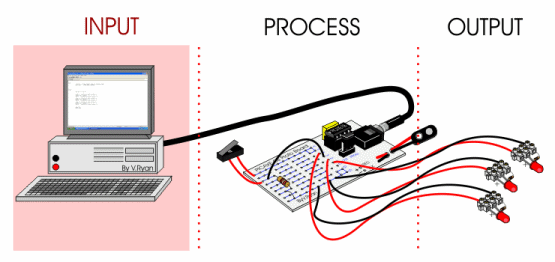| PDF FILE - CLICK HERE FOR PRINTABLE WORKSHEET | ||||||||
|
Most control systems can be divided into three stages
- INPUT, PROCESS and OUTPUT. The diagram below shows the PICAXE system.
The computer is used for programming. Once the programme has been
completed, it is downloaded to the PICAXE circuit using a serial cable
which connects to both the circuit and the serial port of the computer.
This is the INPUT stage. When the programme has been downloaded
successfully the serial cable can be unplugged. |
||||||||
|
THE SYSTEMS DIAGRAM |
||||||||
|
|
||||||||
|
||||||||
|
QUESTIONS: 1. Draw a simplified version of the Systems Diagram representing the PICAXE system. 2. List input devices that can be connected to the PICAXE microcontroller circuit. 3. List output devices that can be connected to the PICAXE microcontroller circuit. |
||||||||
|
|
||||||||
|
|
||||||||
